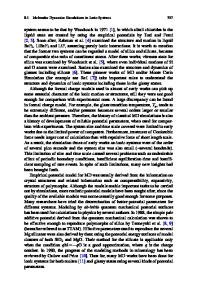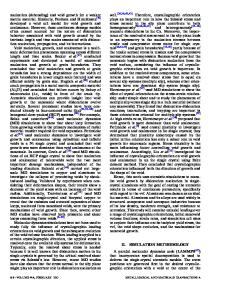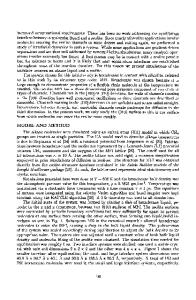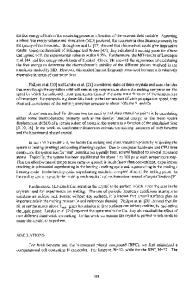Molecular Dynamics Simulations of Steps at Crystal Surfaces.
- PDF / 803,518 Bytes
- 11 Pages / 420.48 x 639 pts Page_size
- 45 Downloads / 327 Views
MOLECULAR DYNAMICS SIMULATIONS OF STEPS AT CRYSTAL SURFACES.
G. H. Gilmer and A. F. Bakker* AT&T Bell Laboratories, Murray Hill, New Jersey 07974 *Permanent address: Applied Physics Department, Delft Technical University, 2600 G.A. Delft, The Netherlands
ABSTRACT The growth of semiconductor crystals by molecular beam epitaxy often involves the motion of distinct steps, which are the boundaries of incomplete atomic layers. We review some of the crystal growth mechanisms based on step generation and motion. Ising models have been widely used to study equilibrium faceting and crystal growth. We discuss more general models of steps which are based on molecular dynamics calculations of atomic motion and empirical interatomic potentials. These models include the possibility of surface and step reconstructions, and here we discuss their influence on the step energy and motion. We find that certain types of steps have a structure with drastically reduced energy compared to unreconstructed steps. We have also examined the effect of stress resulting from misfit in epitaxial systems. We find that 1% misfit can completely change the nature of a step, since its excess energy may change sign from negative to positive, or vice versa. Simulations of molecular beam epitaxy give direct information on the conditions under which step growth mechanisms play a role.
1. INTRODUCTION Recently there has been much interest in the properties of steps on crystal surfaces [1,2]. For a large range of conditions crystal growth occurs by the incorporation of atoms at steps. In the case of molecular beam epitaxy (MBE) atoms impinging on close-packed surfaces are usually sufficiently mobile to diffuse to steps [3]. At the edge of a step they may have more neighbors with which to form bonds, and are more likely to remain localized as the step advances. A wide variety of step distributions have been observed. Figure 1 shows schematic examples of crystal surfaces during growth. Surfaces vicinal to a close-packed orientation are shown, and most atoms are incorporated at the steps. That is, growth proceeds by the advancement of steps that are intrinsic to any surface in this orientation. These steps have a high density of kink sites and this creates an irregular step edge. The number of kink sites is determined primarily by their excess energy Et, and Fig. la is typical for Ek = kT. Fig. lb is an example of a surface in the same orientation, but here the conditions also permit the incorporation of material on terraces between the steps. Recent methods for depositing some semiconductor device structures make use of preferential growth at steps. Tsuchiya et. al. [4] have shown that one-dimensional quantum wells can be made by carefully controlling the step density and by varying the beam composition. The ability to produce the desired structure depends on having material incorporated only at the edges of steps. Not only is it necessary to eliminate twodimensional (2D) nucleation of islands on the terraces, but the steps must also be relatively straight
Data Loading...











